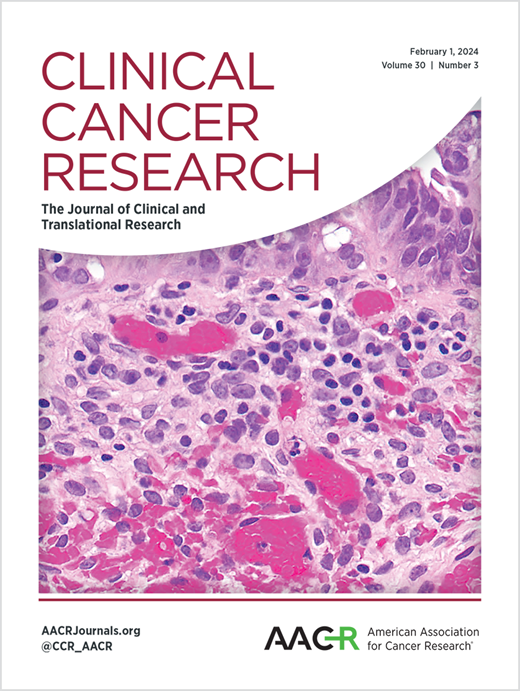HBV-Specific TCR-T Cell Therapy Combining mRNA Electroporation and Lentiviral Transduction: Treatment Regime for Recurrent HBV-Related HCC Post-Liver Transplantation.
IF 10.2
1区 医学
Q1 ONCOLOGY
引用次数: 0
Abstract
BACKGROUND & AIMS This study aimed to preliminarily evaluate the safety, tolerability, and antitumor efficacy of HBV-specific TCR-T cell therapy combining mRNA electroporation and lentiviral transduction in patients with recurrent HBV-HCC post-LT. METHODS In this pilot study (NCT04677088), two types of autologous HBV-specific TCR-redirected T cells were assessed without prior lymphodepletion: (1) multiple infusions of mRNA-electroporated HBV-TCR-T cells (mRNA-HBV-TCR-T cells) and (2) one to three infusions of lentiviral-transduced HBV-TCR-T cells (lenti-HBV-TCR-T cells). Treatment-related adverse events were assessed using the Common Terminology Criteria for Adverse Events (CTCAE), and anti-tumor efficacy was evaluated using computed tomography (CT) imaging according to RECIST 1.1 criteria. Progression-free survival (PFS) was defined as the time from the start of study treatment until objective tumor progression or death. RESULTS Both mRNA-electroporated and lentiviral-transduced HBV-specific TCR-T cells demonstrated a favorable safety profile, with only Grade 1 to 2 treatment-related adverse events observed. In the mRNA-HBV-TCR-T cells cohort, the median PFS was 2.32 months (range: 1.87 to 2.77 months). The combination therapy cohort (mRNA-HBV-TCR-T cells + lenti-HBV-TCR-T cells) showed median PFS of 7.34 months (range: 4.47 to 7.60 months). CT imaging indicated effective tumor control in the combination therapy group. CONCLUSIONS This study preliminarily suggests that the combination of mRNA-HBV-TCR-T cells and lenti-HBV-TCR-T cells could be a safe and potentially effective approach for treating patients following liver transplantation in the context of lifelong immunosuppression drug administration. Further studies are needed to refine treatment strategies and assess long-term safety and efficacy in this special patient population.结合mRNA电穿孔和慢病毒转导的hbv特异性TCR-T细胞治疗:肝移植后复发hbv相关HCC的治疗方案
背景与目的本研究旨在初步评价hbv特异性TCR-T细胞联合mRNA电穿孔和慢病毒转导治疗HBV-HCC术后复发患者的安全性、耐受性和抗肿瘤疗效。方法在这项中试研究(NCT04677088)中,在没有淋巴细胞清除的情况下,对两种类型的自体hbv特异性tcr重定向T细胞进行了评估:(1)多次输注mrna电穿孔HBV-TCR-T细胞(mRNA-HBV-TCR-T细胞)和(2)1至3次输注慢病毒转导HBV-TCR-T细胞(慢病毒-HBV-TCR-T细胞)。使用不良事件通用术语标准(CTCAE)评估治疗相关不良事件,并根据RECIST 1.1标准使用计算机断层扫描(CT)成像评估抗肿瘤疗效。无进展生存期(PFS)定义为从研究治疗开始到客观肿瘤进展或死亡的时间。结果mrna电穿孔和慢病毒转导的hbv特异性TCR-T细胞均显示出良好的安全性,仅观察到1至2级治疗相关不良事件。在mRNA-HBV-TCR-T细胞队列中,中位PFS为2.32个月(范围:1.87至2.77个月)。联合治疗队列(mRNA-HBV-TCR-T细胞+ lentii - hbv - tcr - t细胞)显示中位PFS为7.34个月(范围:4.47至7.60个月)。CT显示联合治疗组肿瘤得到有效控制。结论本研究初步提示,mRNA-HBV-TCR-T细胞与lentii - hbv - tcr - t细胞联合治疗肝移植术后终身免疫抑制药物治疗可能是一种安全有效的方法。需要进一步的研究来完善治疗策略,并评估这一特殊患者群体的长期安全性和有效性。
本文章由计算机程序翻译,如有差异,请以英文原文为准。
求助全文
约1分钟内获得全文
求助全文
来源期刊

Clinical Cancer Research
医学-肿瘤学
CiteScore
20.10
自引率
1.70%
发文量
1207
审稿时长
2.1 months
期刊介绍:
Clinical Cancer Research is a journal focusing on groundbreaking research in cancer, specifically in the areas where the laboratory and the clinic intersect. Our primary interest lies in clinical trials that investigate novel treatments, accompanied by research on pharmacology, molecular alterations, and biomarkers that can predict response or resistance to these treatments. Furthermore, we prioritize laboratory and animal studies that explore new drugs and targeted agents with the potential to advance to clinical trials. We also encourage research on targetable mechanisms of cancer development, progression, and metastasis.
 求助内容:
求助内容: 应助结果提醒方式:
应助结果提醒方式:


